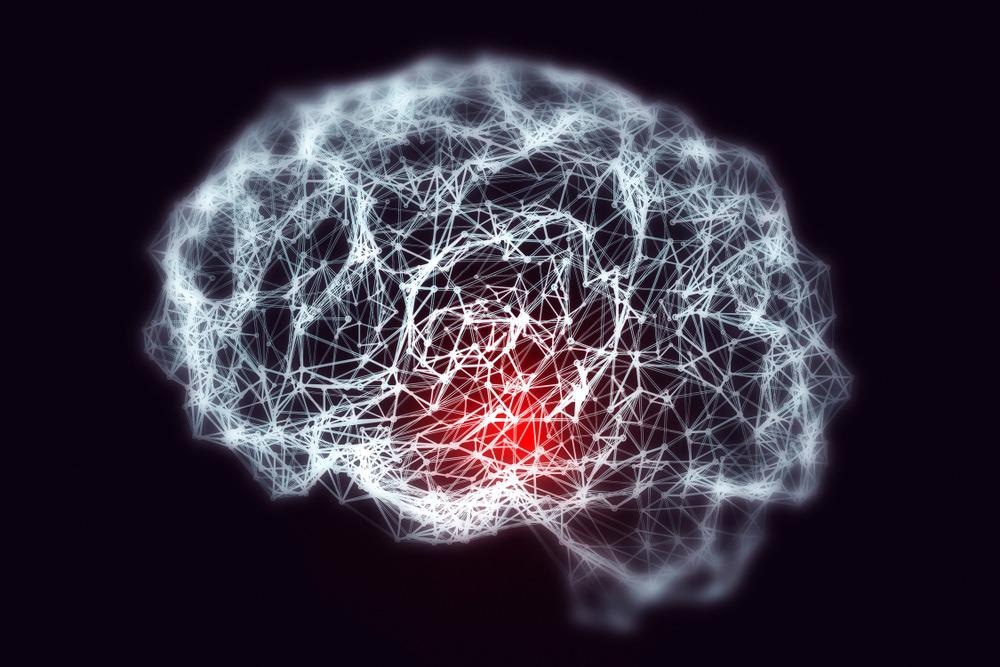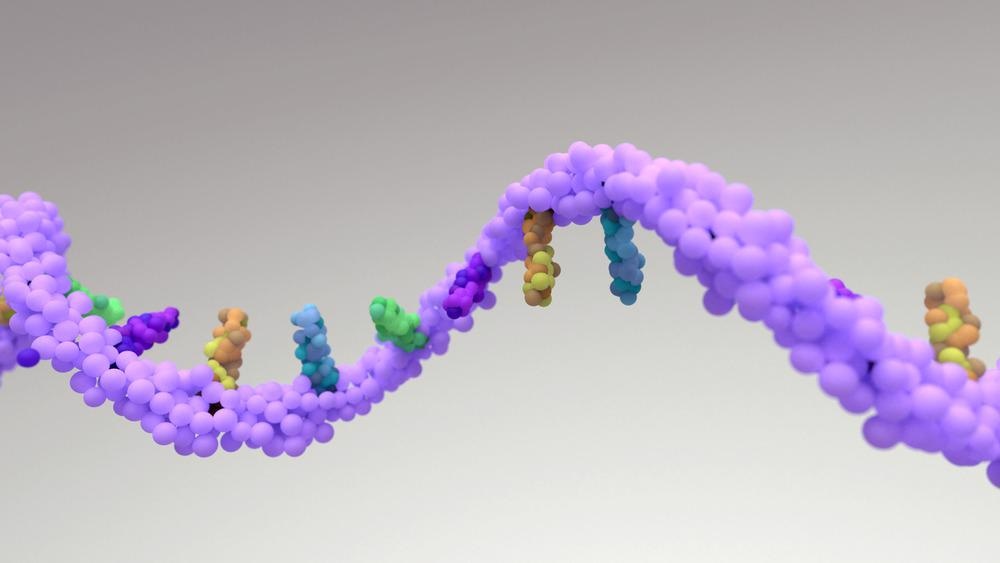Alzheimer's disease is known as the most common type of dementia and consists of the decline in cognitive ability that affects approximately two-thirds of dementia patients aged 65 years and older.

Image Credit: Kateryna Kon/Shutterstock.com
This disease is a neurodegenerative disorder that can progress from its onset, causing impairment of behavioral and cognitive functions, including memory, comprehension, language, attention, reasoning, and judgment.
Although this disorder is considered to be the sixth leading cause of death in the United States, some treatments can improve some symptoms; however, there is currently no cure available.
Pathology
This disease can be characterized through extracellular Aβ deposits or plaques and intracellular aggregations of neurofibrillary tangles (NFTs). The Aβ plaques initially develop in locations such as the basal, temporal, and orbitofrontal neocortex regions of the brain with progression during later stages throughout the neocortex and the hippocampus and amygdala diencephalon, and basal ganglia.
In advanced and critical cases, Aβ plaques can be found throughout the mesencephalon, lower brain stem, and cerebellar cortex. The progression of Alzheimer's disease can be ascribed mainly to Aβ and NFTs.
Treatments
Cholinesterase inhibitors can be used to treat mild to moderate symptoms of Alzheimer's; these drugs work by increasing the chemical acetylcholine to improve nerve cells' ability to communicate and pass on messages in the brain. This is significant as nerve cells are damaged and can lose their functionality with this disease.
While these drugs can aid in improving symptoms and some functionality such as thinking, memory, and communication, they do not prevent the progression of the disease in the brain, and this can cause symptoms to become worse over time.
Single-Cell Sequencing
Single-cell RNA sequencing can provide an alternative approach to studying the cellular heterogeneity of the brain. This process works by profiling tens of thousands of individual cells with the aim of characterizing pathological cellular changes within Alzheimer's patients.
Single-cell RNA-sequencing (scRNA-Seq) is useful for dissecting the function and dysfunction of highly heterogeneous cells in the brain at the single-cell level.
Next-generation sequencing technology allows a higher resolution of cellular differences with a higher understanding of individual cell functioning. The significance of this data allows an enhancement in comprehending why particular cells are vulnerable to Alzheimer's disease.
Specifically, this sequencing approach can identify complex and rare cell populations, as well as unveil regulatory relationships between genes, and track the trajectories of distinct cell lineages within its development. This single-cell view of the pathology of Alzheimer's disease enables a cellular-level view of transcriptional alterations and increases knowledge of its pathogenesis.

Image Credit: Design_Cells/Shutterstock.com
Therapeutic Significance
The information gained from this investigation can aid researchers in finding potential therapeutic targets for the prevention and treatment of Alzheimer's disease.
The significance of utilizing single-cell sequencing techniques within research can be seen through studies that have found the transition from a homeostatic state to a new microglia state, known as the disease-associated microglia, which was achieved sequentially via the Trem2-dependent and Trem2-independent pathways. This research is significant when attempting to comprehend the immune system's response to this neurological disorder.
Additional research, including the progression of the disease and the transition between microglial states using a mouse model, has found genes associated with cell proliferation being overexpressed during the initial stages of microglial response. Ultimately, this study proposed the response in activated response microglia can aid in being a potential risk factor for Alzheimer's disease.
Challenges and Future Outlook
Research within the field of neurological diseases is significant due to the lack of comprehension of the principles of the nervous system, which has become a significant objective for biomedical research to assist with effective treatment.
The complexity of the brain contributes to challenges regarding its functionality, which is an obstacle for neurological conditions such as Alzheimer's but is also applicable for other neurological conditions, such as Parkinson's disease, multiple sclerosis, brain trauma, and more.
This lack of complete comprehension about the brain can be ascribed to its complexity in three key areas, including having high dimensionality, neuronal subcellular structures with varied length scales, such as tens of nanometers for synapses to centimeters for axonal projections, as well as the lack of comprehension regarding glial cell activity.
These complexities can result in difficulties for researchers attempting to understand brain function and dysfunction in neurological areas. With single-cell sequencing, the insight into cellular changes and the pathology of Alzheimer's and other neurological conditions can be better understood. The potential of this technology for the treatment of Alzheimer's could provide specific therapeutic targets for drug delivery, which may aid in regulating neural activity and revolutionize this area of medicine for those burdened with this disease.

 Continue Reading: A Guide to Understanding Gene Expression
Continue Reading: A Guide to Understanding Gene Expression
Sources:
- Alzheimer's Research UK. 2022. Alzheimer's disease treatments | Alzheimer's Research UK. [online] Available at: <https://www.alzheimersresearchuk.org/dementia-information/types-of-dementia/alzheimers-disease/treatments/> [Accessed 7 February 2022].
- Jiang, J., Wang, C., Qi, R., Fu, H. and Ma, Q., 2020. scREAD: A Single-Cell RNA-Seq Database for Alzheimer's Disease. iScience, 23(11), p.101769. Available at: 10.1016/j.isci.2020.101769
- Kuhn, A. and Raskatov, J., 2019. Using mirror-image peptides to enhance robustness and reproducibility in studying the amyloid β-protein. Progress in Molecular Biology and Translational Science, pp.57-67. Available at: https://doi.org/10.1016/bs.pmbts.2019.05.010
- Kumar A, Sidhu J, Goyal A, et al. Alzheimer Disease. [Updated 2021 Aug 11]. In: StatPearls [Internet]. Treasure Island (FL): StatPearls Publishing; Available from: https://www.ncbi.nlm.nih.gov/books/NBK499922/
- Kizil, C., Cosacak, M. and Bhattarai, P., 2020. Alzheimer's disease, neural stem cells and neurogenesis: cellular phase at single-cell level. Neural Regeneration Research, 15(5), p.824. Available at: 10.4103/1673-5374.268896
- Mathys, H., Davila-Velderrain, J., Peng, Z., Gao, F., Mohammadi, S., Young, J., Menon, M., He, L., Abdurrob, F., Jiang, X., Martorell, A., Ransohoff, R., Hafler, B., Bennett, D., Kellis, M. and Tsai, L., 2019. Single-cell transcriptomic analysis of Alzheimer's disease. Nature, 570(7761), pp.332-337. Available at: 10.1038/s41586-019-1195-2
- Tiwari, S., Atluri, V., Kaushik, A., Yndart, A. and Nair, M., 2019. <p>Alzheimer’s disease: pathogenesis, diagnostics, and therapeutics</p>. International Journal of Nanomedicine, Volume 14, pp.5541-5554. Available at: 10.2147/IJN.S200490
- Xu, H. and Jia, J., 2021. Single-Cell RNA Sequencing of Peripheral Blood Reveals Immune Cell Signatures in Alzheimer's Disease. Frontiers in Immunology, 12. Available at: 10.3389/fimmu.2021.645666
Further Reading